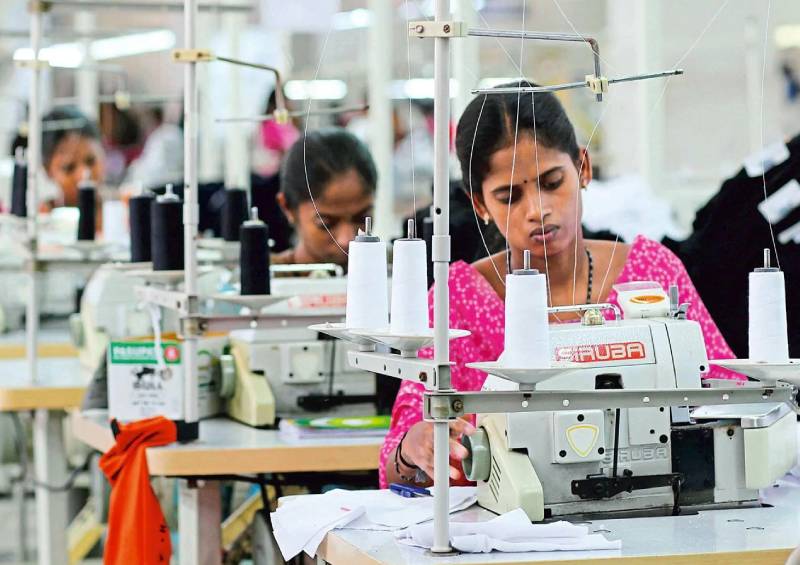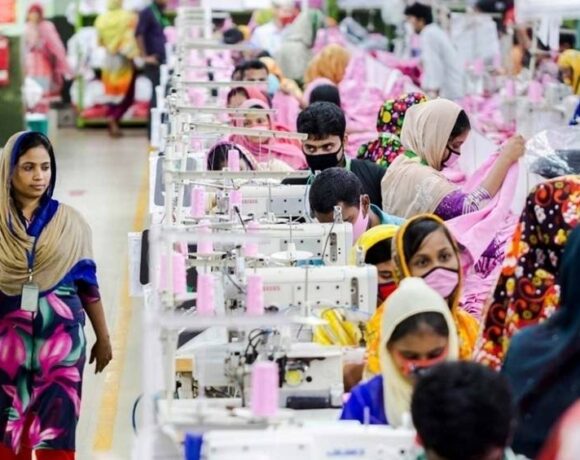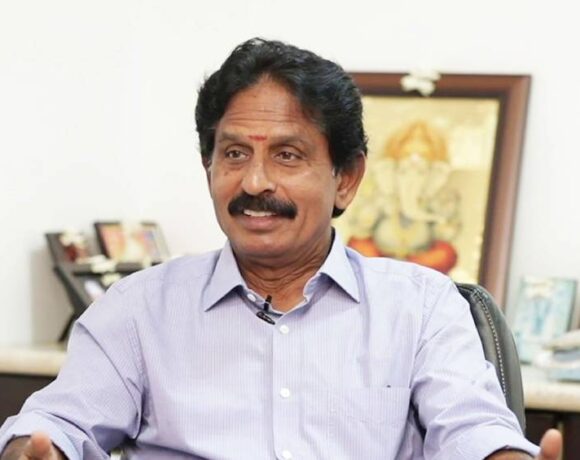Lack Of Scale And Absence Of Right Product Mix Playing Spoilsport For Textile Industry

Bangladesh and Vietnam, among other countries, have in the past captured a large part of China’s declining share in the global ready-made garment (RMG) exports, while India failed to adequately capitalise on China’s losing share. Recent political upheavals and social unrest in Bangladesh which is the second largest exporter of RMG after China, once again brings to the fore the issue whether India has the requisite capability and capacity to take advantage of such a situation and attract some of the global garment buyers and brands to look at India as an alternative destination.
Experts and observers firmly believe that India hardly has large garment making capacities which can meet the requirements of these global brands. Moreover, country’s small and medium capacities are also not competitive enough in terms of pricing and also delivery schedule, which is a very crucial component in establishing an efficient supply chain.
“For the industry to avail, these opportunities, we will have to first put up right kind of capacities. Our offering should also be aligned to the global demand. Currently, as an industry, we have struggled on both fronts,” says Rahul Mehta, former President & Chief Mentor, Clothing Manufacturers Association of India (CMAI).
Here it may be noted that post-Covid also, India was considered to be one of the biggest beneficiaries on account of the emergence of the China+1 factor. However, the Indian textile & apparel (T&A) sector miserably failed to avail that opportunity. And the reason is not far to sight. The industry has not been able to build up large capacities with economies of scale. Besides, as an industry, India has not been able to align its production as per the global requirements. Still over 60 per cent of country’s export basket is made of cotton-based products, even as globally the buyers primarily seek MMF-based products to cater to the needs of the major markets like the US and EU.
“We need a concerted road map and action plan to build up our textiles and apparel capacities to explore the emerging opportunities in the medium to long term. As an industry, we have been missing the opportunities in multiple occasions in the past and cannot afford to continue with such an approach going forward,” states Sanjay Jain, Managing Director, TT Ltd.
Moreover, the industry players are also of the view that the $175-billion Indian T&A sector cannot adopt an ad hoc approach for increasing its share in the global trade. India holds around 4 per cent share of the global trade in textiles and apparel. It is high time that the industry creates world class manufacturing capacities to enhance its share in the global market. Home textiles is one such segment, where India has to a certain extent proved its mettle and a similar kind of initiative is called for in garmenting and other textile segments as well.
India’s home textile market, valued at $9.6 billion in 2024, is projected to grow to over $15 billion in the next five years, according to Mordor Intelligence. Led by players like Welspun Living, Indo Count Industries, Trident Ltd and Himatsingka Seide, the country accounts for nearly 7 per cent of the global home textiles trade, with a significant share of exports to the US.
The government’s attempts to build robust textile and apparel manufacturing facilities have so far generated lukewarm response in the industry. The case in point is the PLI scheme, which was launched in 2021 with an approved outlay of Rs 10,683 crore for the production of man-made fibre (MMF) apparel, MMF fabrics and products of technical textiles, but has more or less been a non-starter. Experts are of the opinion that the scheme, being reviewed by the government to possibly include more products, could have a lower minimum investment and turnover criteria to allow smaller entities to be eligible for it. They believe that the textile ministry’s proposed expansion of the PLI scheme to include all garments, including those made of cotton, will be more effective if the minimum investment and turnover criteria are lowered.
The scheme was re-opened last year as the initial round did not attract enough investments to use up the entire outlay earmarked for the scheme. While the industry has been pushing for the inclusion of cotton garments in the scheme and lowering the criteria for minimum investment and turnover, no changes were made to the scheme when applications were invited for the second round. Even after the application window was opened for the second time, enough investments did not flow in. That is why the Ministry of Textiles is now working on changing the conditions of the scheme to make it more accessible and attractive to investors.
Industry experts recently emphasised that expeditious implementation of the ambitious PM MITRA scheme, aimed at developing seven PM Mega Integrated Textile Regions and Apparel (PM MITRA) parks, will significantly attract large investments, including foreign direct investment (FDI), in the sector while generating substantial employment. So far, the pace of implementation has not been up to the mark.
PM MITRA parks in various states underlined the emphasis on the creation of opportunities for the entire textile sector. These parks are coming up in Tamil Nadu, Telangana, Gujarat, Karnataka, Madhya Pradesh, Uttar Pradesh and Maharashtra. Investment of nearly Rs 70,000 crore and employment generation of two million is envisaged through these parks.
The Ministry of Textiles is overseeing the execution of these projects. A special purpose vehicle owned by the Centre and state governments is being set up for each park, which will oversee the implementation of the project. The PM MITRA parks seek to address the traditional as well as emerging challenges that the textiles industry has been facing for a long time. These parks will bring together the entire textile value chain under one roof, deriving inspiration from the PM’s 5F vision—farm to foreign via fibre, fabric and fashion focus.
“The PM MITRA scheme has been one of the pioneering initiatives for capacity building and attracting new investments. The scheme mandate rightly captures the industry’s requirements for cluster-based production with value chain presence and hub-and-spoke models aimed at each PM MITRA park. This is a very important aspect not just for meeting production and logistics efficiencies, but also as a sustainable model as it significantly reduces the carbon footprint which the textile industry presently has because of the dispersed nature of the various segments—from fibre to garment,” says Rakesh Mehra, Chairman of Confederation of Indian Textile Industry (CITI).
“However, the industry looks forward to a faster implementation of the scheme as the industry presently does not have any important investment promotion scheme to address the need of capacity building for meeting the target of doubling the textile base to $350 billion by 2030,” adds Mehra.
In a recent report, rating agency ICRA has said that investments in the textile value chain under PLI scheme and PM MITRA parks and China Plus One strategy are expected to be the key growth drivers for the industry going ahead. “PM MITRA parks will offer an opportunity to create an integrated textile value chain and encourage capacity additions in the segment. A competitive Incentive Support (CIS) up to Rs 300 crore per park to the units in PM MITRA park shall also be provided to incentivise speedy implementation. Convergence with other Government of India schemes shall also be facilitated to ensure additional incentives to the Master Developer and investor units,” states the report.
“All these schemes look quite attractive on paper. However, it remains to be seen how the entire execution process takes place. Unless the industry sees enough incentive to invest, we may not see the desired results coming out from these schemes. Moreover, we also need to rationalise our tax structure, wherein raw materials are available to the industry at competitive pricing, something that has not happened so far,” says an industry observer.
Analysts view that even the Free Trade Agreement (FTA) with the UK (which is in the offing) may not fetch the desired results since the domestic industry does not have the right kind of capacity and product mix at present. “The FTA with UK could be a big trigger to infuse momentum into our exports. However, for that to happen, we will have to be competitive in the global market. As an industry and supplier, we still don’t have the right kind of scale as also the offering. It is high time that we look into these issues in a more concerted manner,” says Updeep Singh, a textile industry veteran.














